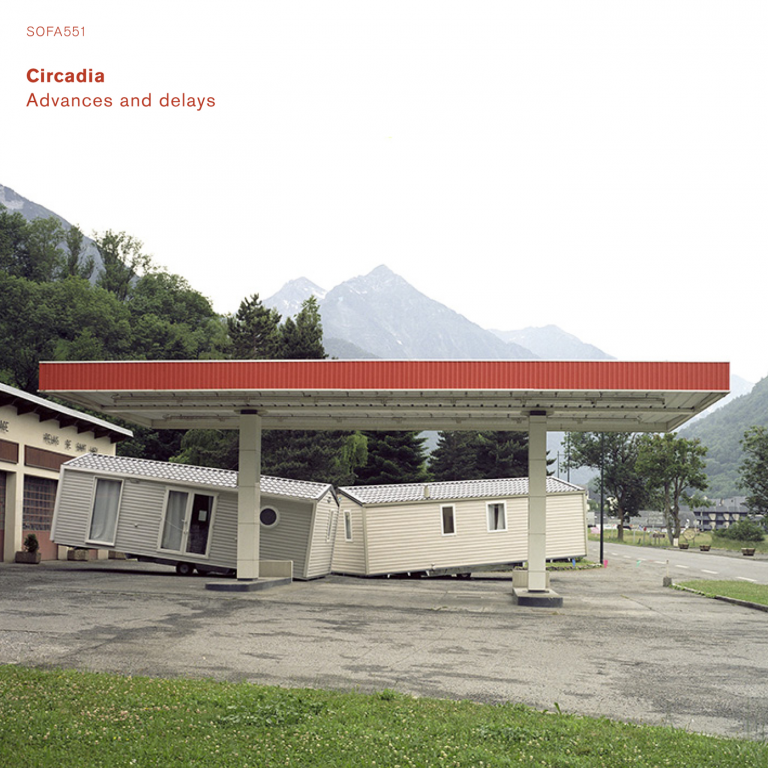You might not know Circadia, but you might know one or more of the musicians in the group: if not one of its guitarists, Swedish David Stackenäs (Labfield, Fire! Orchestra) or Norwegian Kim Myhr (Mural), then maybe The Necks‘ Australian drummer, Tony Buck, or Joe Williamson, a Canadian bassist Buck’s often paired with.
As Lou Reed once wrote in sleeve notes: “You can’t beat 2 guitars, bass, drum” (sic). But I don’t think Advances and Delays was quite what Lou had in mind. What we have here are two compelling, sensitively wrought instrumental pieces in a post-jazz, -rock, and -minimalism mould that hasn’t quite set.
“The Animal Enters and Traverses the Light” (19:20) begins with a sun-shaft dance of brittle acoustic guitar motes, and what initially sounds like flute but soon reveals itself to be bowed bass, refracted off an exploded cloud of kinetic percussion. While the combined bowed-string shimmer and pointillist guitar picking is mesmerising, the orbiting particles of percussive debris keep the ear pricked to the looping, thrumming melody carried by (I think it’s Myhr’s 12-string) guitar.
After ten minutes of incrementally ratcheted tension, everything draws together, reduced in volume but not mass, as if collapsing in on itself, only to be driven along a new tangent by the assertion of firmly bowed bass notes and cross-hatch guitar strums.
At about the fifteenth minute this resolves into a drone of bowed gongs and gravid bass, as the guitar picking coils into a tight, light-mechanical spin/spooling sparking wiry strummed chords.
Needless to say, fans of The Necks will ‘get’ this instantly, and may appreciate the relative brevity. For fans of Mural, the same relative brevity may seem rudely peremptory.
“The Human Volunteers were Kept in Isolation” is shorter still at 14:25 – a cleaner, quieter piece, beginning with single notes picked and lifted from strings, and then the rise and decay of bowed percussion sustains – some evocative of mournful, muted horns or human keening – and soft gong strikes.
This time the evolution is through sharper emphases and greater definition in collaged sounds, spatially separate but resonating sympathetically.
Again there’s a change roughly half-way home, but this time it’s a quietly dramatic one, with a new silence ahead of a shiver of hand-held percussion and shakers, a new bowed-bass drone, and then, unexpectedly, a congress of complex, intertwined fingerpicking, encouraging a new boldness, with Buck sounding full bass hits and hard, pointillist cymbal patter. The ending is too brusque.
There’s a fair bit of this sort of thing around lately, but the balance of gravity, drive and burnished, atmospheric sonics here is just right, making Advances and Delays a fully absorbing half-hour plus change – an invigorating quick fix of deep listening.

